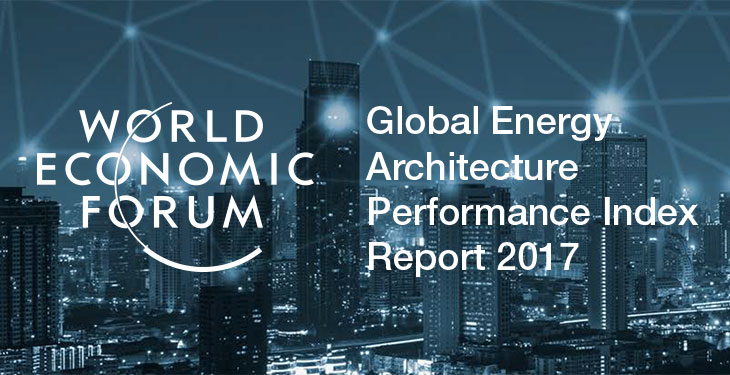Romania is ranked the 24th in the latest Global Energy Architecture Performance Index Report prepared by World Economic Forum, in collaboration with Accenture. Part of WEC’s System initiative on Shaping the Future of Energy, the index benchmarks the energy system performance of 127 countries according to 18 indicators covering three core dimensions: energy access and security, sustainability and contribution to economic growth.
Romania scores 0.7 (on a scale of 0 to 1), and is now 15 places up from the 2009 benchmark. Romania scores well on all three dimensions: economic growth and development (0.66), energy access and security (0.79), environmental sustainability (0.65). Romania is better ranked than the Czech Republic (31st), Canada, Netherlands or Belgium, and much better than the Russian Federation (48th) or United States (52nd) – labeled with “average performance”.
During the last five years, “the world has indeed witnessed unprecedented structural changes in the global energy system”, write the authors of the report. World energy consumption has continued to grow, and the economics of producing this energy have experienced significant change. Global power markets are transforming in favour of sustainable infrastructure, thus “many countries have set forth ambitious plans for their new energy architectures, aiming to take advantage of technological developments and diversify the composition of their supplies to meet rising energy needs and increase security”.
Top performers come in all shapes and sizes: While many of this year’s top performers tend to be smaller countries, both in size of gross domestic product and population, and typically have advanced economies, a significant number of countries do not fit this mould.
These exceptions demonstrate that few constraints are limiting high performance. In fact, top performers come in all shapes and sizes. Their many variations underscore the potential for any country to make improvements in, providing secure, affordable and sustainable energy to its population, regardless of its context
European countries dominate the leader board: As in previous years, countries from Europe continue to hold many of the top 20 ranks on the EAPI, with the exceptions of Colombia (8th), New Zealand (9th), Uruguay (10th) and Costa Rica (14th). This strong performance is underpinned by advantages gained through a long history of coordination between European nations, which is a model for regional cooperation. These countries score particularly high on using market forces (reflected in low levels of price distortion) and on the diversity of their energy mix. However, many of them have significant room for improvement, especially in continuing to ensure security of supply given the low level of resource endowment across the continent
The world’s biggest energy consumers are being outperformed. Major energy consumers continue to struggle to take leading positions on the EAPI. While showing strengths in certain areas, and early signs of strong trajectories in others, China (95th), India (87th), Japan (45th), the Russian Federation (48th) and the United States (52nd) have either slipped in the rankings, since the EAPI 2009 benchmark or experienced only marginal gains. Their energy consumption dwarfs that of the highest-performing top 20. Big consumers need to intensify their efforts and overcome the inherent challenges of their large, complex energy systems; doing,so will allow them to make a disproportionately positive, impact on global energy architecture. With the world’s energy markets underpinned by the global economy’s performance, the global energy sector will continue to be challenged for as long as these countries – some of the largest economies in the world – have difficulty, exceeding average performance
Top-ranked countries and the rest of the table exhibit a growing divide in performance. Since last year, the top 20 highest-performing countries have achieved twice the average increase in EAPI score, compared to that of all other countries. This difference in improving performance reflects a further strengthening of energy sectors in countries already performing well, and an opportunity for other countries to understand these journeys more closely – ultimately so that they can interpret these in the context of their own transitions.
